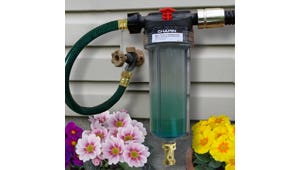Poisonous Leaves
I’ve heard some trees have leaves that emit a substance that can harm or kill plants. What trees are they and should I treat their leaves differently during fall cleanup?
Question: I've heard some trees have leaves that emit a substance that can harm or kill plants. What trees are they and should I treat their leaves differently during fall cleanup?
Answer: You're thinking of black walnut trees (Juglans nigra) and butternuts (J. cinerea). They produce a substance called juglone, which is harmful to tomato plants, potatoes, blackberry and blueberry bushes, azaleas, rhododendrons and mountain laurels, apple trees and red pines. The toxin is secreted from the tree's roots; susceptible plants growing within the root zone (roughly the width of the tree's canopy) or at its edges sicken and die.
Juglone is present in the tree's leaves, bark and wood, but less so than in its roots. You can add the leaves to your compost pile; with in four weeks the juglone will break down. If you want to be doubly sure, you can compost the leaves separately from your main compost pile and test to be sure the finished compost is safe by planting a tomato seedling in a pot of it. If the seedling survives, the juglone is gone.
If you're thinking of shredding the leaves and placing them on your garden as a mulch, be aware that it may take a full two months for the juglone to breakdown once it gets into the soil as the leaves decompose. This is something to keep in mind if you plan to plant juglone-sensitive plants in that area next spring.
Many plants have no problem with juglone. See The Ohio State University's lists of juglone-tolerant and juglone-sensitive plants.
Get an illustrated guide to 5 fall garden tasks for under $5
Browse outstanding gardening tools, including heavy-duty work gloves.
See our CD on gardening in the shade







